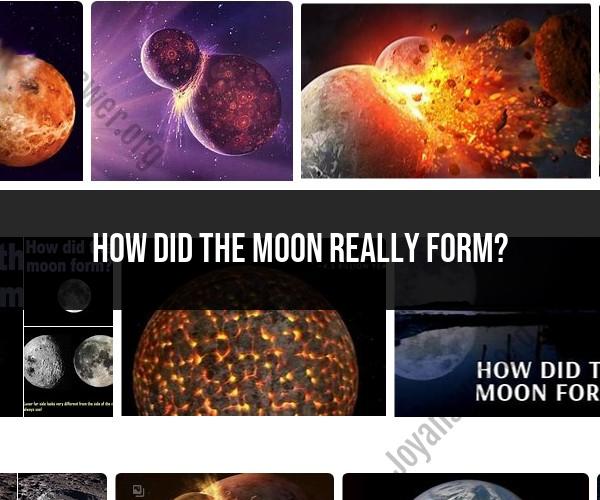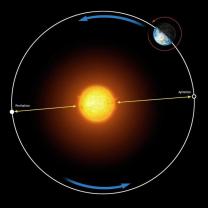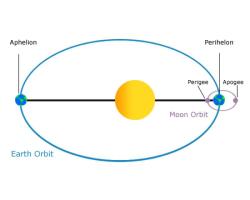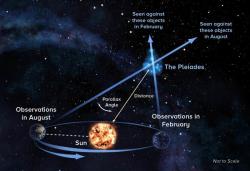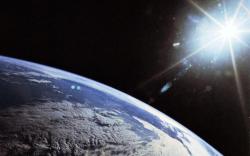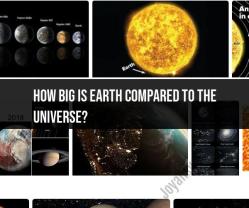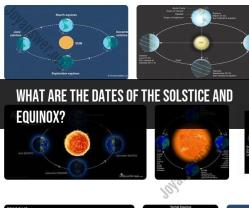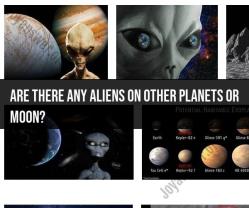How did the moon really form?
The formation of the Moon is a topic that has been studied extensively by scientists, and the leading theory is called the Giant Impact Hypothesis. This theory explains that the Moon formed as a result of a massive collision between Earth and a Mars-sized object early in the history of the solar system, approximately 4.5 billion years ago. Here is a summary of the Giant Impact Hypothesis:
Early Solar System: In the early stages of the solar system, about 4.5 billion years ago, it was a chaotic place with numerous small objects and protoplanets orbiting the Sun.
Collision: The Moon's formation begins with a large, Mars-sized object (sometimes referred to as "Theia") on a collision course with Earth. This object is thought to have been about the size of Mars or smaller.
Impact: Theia collided with Earth at a high velocity, leading to a cataclysmic impact event. This collision was so violent that it resulted in the complete destruction of Theia and a significant portion of Earth's outer layers.
Debris Cloud: The collision caused a tremendous amount of debris to be ejected into space. This debris formed a massive cloud of molten rock and metal, which eventually orbited around Earth.
Accretion of the Moon: Over time, this cloud of debris began to cool and solidify. Gravitational forces caused the debris to coalesce and form a single large body, which we now know as the Moon.
Differentiation: As the Moon continued to cool, it underwent a process called differentiation, where heavier materials sank to the core, and lighter materials formed the crust.
Orbital Stabilization: Over millions of years, the Moon gradually moved away from Earth due to tidal forces, eventually settling into a stable orbit.
Evidence supporting the Giant Impact Hypothesis includes the similarity in isotopic compositions of certain elements found on both the Moon and Earth, as well as computer simulations of planetary formation and dynamics that support the idea of a massive impact.
While the Giant Impact Hypothesis is the leading explanation for the Moon's formation, it's important to note that scientific understanding is continually evolving, and researchers continue to study the Moon's composition and history to refine our understanding of its origins. Nonetheless, this theory provides a compelling explanation for the Moon's formation and is widely accepted within the scientific community.
The Moon's Formation: Unraveling the Cosmic Mystery
The Moon is the Earth's only natural satellite, and its formation is one of the most enduring mysteries in astronomy. Scientists have proposed a number of different theories to explain how the Moon formed, but the most widely accepted theory is the giant-impact hypothesis.
The giant-impact hypothesis states that the Moon formed from the debris of a collision between the early Earth and another planet-sized object, about the size of Mars. This collision is thought to have occurred about 4.5 billion years ago, shortly after the Earth formed.
The impact would have ejected a large amount of material into orbit around the Earth. This material would have eventually coalesced to form the Moon. The Moon's composition is similar to that of the Earth's mantle, suggesting that it formed from material that was ejected from the Earth's mantle during the impact.
The giant-impact hypothesis is supported by a number of lines of evidence, including:
- The Moon's composition is similar to that of the Earth's mantle.
- The Moon has a relatively low density, suggesting that it is made up of lighter materials, such as those found in the Earth's mantle.
- The Moon has a very small iron core, suggesting that most of its iron was lost during the impact.
- The Moon's orbit is tilted relative to the Earth's equator, suggesting that it was formed from material that was ejected from the Earth's mantle at an angle.
While the giant-impact hypothesis is the most widely accepted theory for the Moon's formation, there are still some unanswered questions. For example, scientists are not sure what the composition of the impactor was, or how the Moon's orbit came to be so stable.
Moon's Origin: Investigating the Truth of Its Creation
The Moon's origin is a topic of ongoing research, and scientists are constantly learning new things about its formation. One of the most exciting recent developments is the discovery of water ice on the Moon. This discovery suggests that the Moon may have been habitable in the past, and it raises the possibility that life may have once existed on the Moon.
The Moon is a fascinating celestial body, and its formation is a mystery that scientists are still working to unravel. As we continue to learn more about the Moon, we may one day be able to answer some of the most fundamental questions about its origin and its place in the universe.
Lunar Birth: The Scientific Explanation of the Moon's Formation
The giant-impact hypothesis is the most widely accepted scientific explanation for the Moon's formation. It states that the Moon formed from the debris of a collision between the early Earth and another planet-sized object. This collision is thought to have occurred about 4.5 billion years ago, shortly after the Earth formed.
The impact would have ejected a large amount of material into orbit around the Earth. This material would have eventually coalesced to form the Moon. The Moon's composition is similar to that of the Earth's mantle, suggesting that it formed from material that was ejected from the Earth's mantle during the impact.
The giant-impact hypothesis is supported by a number of lines of evidence, including:
- The Moon's composition is similar to that of the Earth's mantle.
- The Moon has a relatively low density, suggesting that it is made up of lighter materials, such as those found in the Earth's mantle.
- The Moon has a very small iron core, suggesting that most of its iron was lost during the impact.
- The Moon's orbit is tilted relative to the Earth's equator, suggesting that it was formed from material that was ejected from the Earth's mantle at an angle.
While the giant-impact hypothesis is the most widely accepted theory for the Moon's formation, there are still some unanswered questions. For example, scientists are not sure what the composition of the impactor was, or how the Moon's orbit came to be so stable.
The Moon's formation is a complex and fascinating process, and scientists are still learning new things about it all the time. By studying the Moon, we can learn more about the early Earth and the formation of our solar system.
